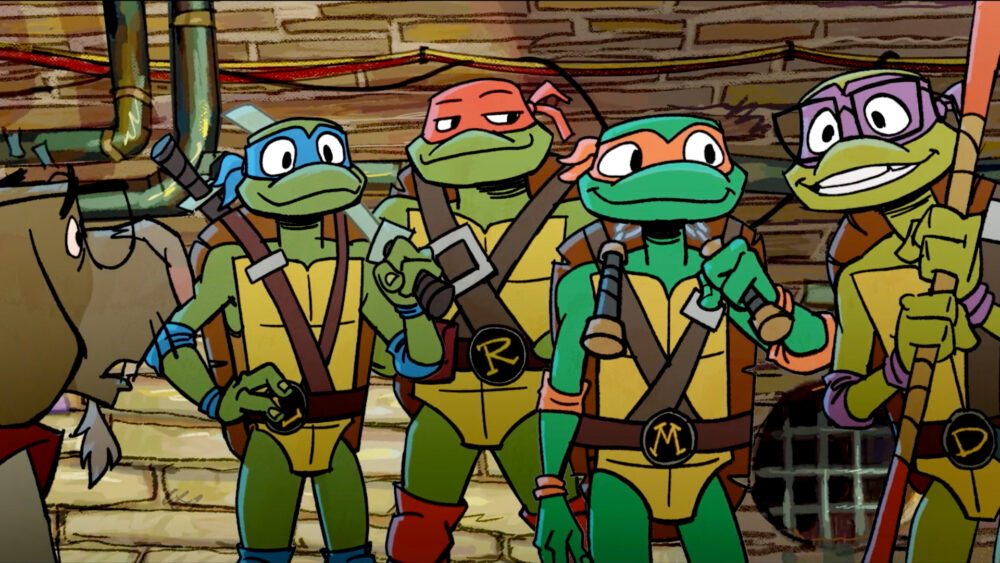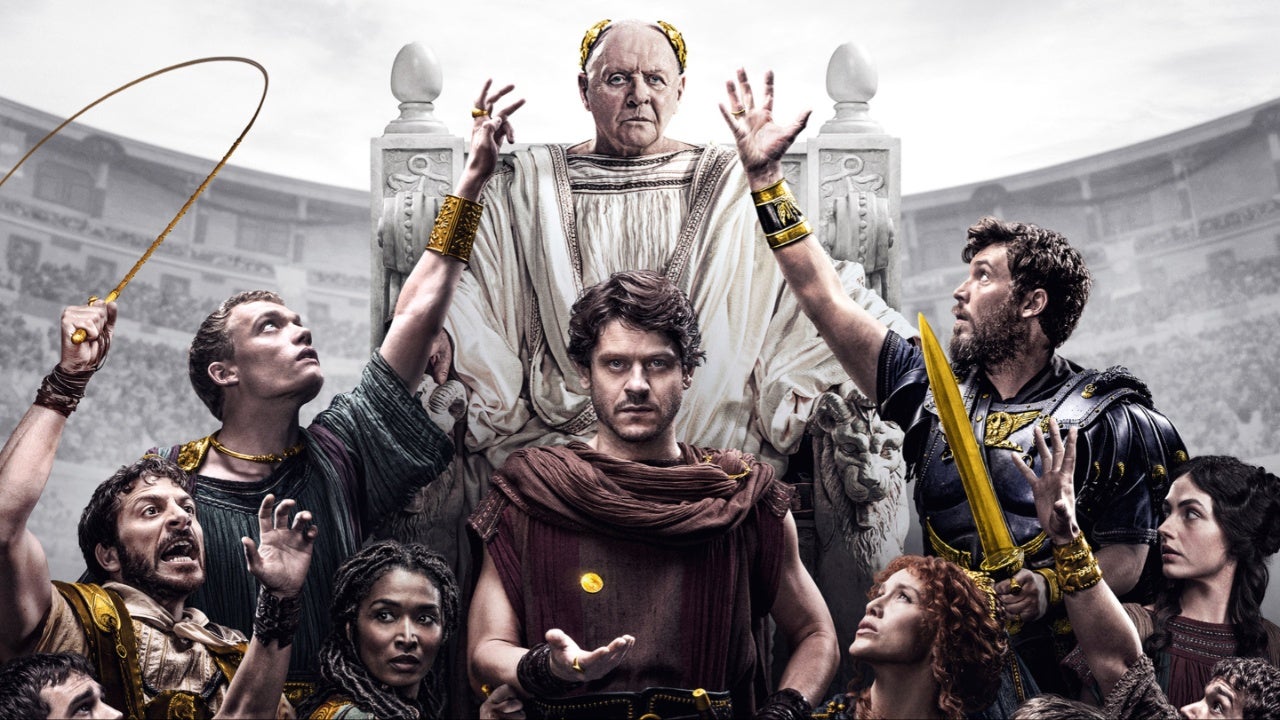Kerry Brougher, Director of the Academy Museum of Motion Pictures, today announced the details of the inaugural exhibitions that will be on view when the Museum opens in late 2019.
The first institution of its scope and scale devoted to the past, present, and future of cinema, the Academy Museum will open with a long-term exhibition that explores the evolution of film from its beginnings to its possible futures. Where Dreams Are Made: A Journey Inside the Movies (working title) will occupy two floors of the Museum’s iconic Saban Building—formerly known as the May Company building—and looks at the development of the art and science of motion pictures. Brougher also announced the institution’s first temporary exhibitions. The Museum will open with Hayao Miyazaki (working title), presented in collaboration with the filmmaker’s Studio Ghibli—the first major exhibition of his work presented in the United States.
This exhibition will be followed by Regeneration: Black Cinema 1900–1970 (Fall 2020), a groundbreaking exhibition that reveals the important and under-recognized history of African-American filmmakers in the development of American cinema. It will explore African-American representation in the motion picture from its advent to just beyond the Civil Rights era. The Museum’s 34-foot-high project space will open with a major work by the Tokyo-based interdisciplinary art collective teamLab. Additional exhibitions will include Making of: The Wizard of Oz, featuring elements that contributed to the creation of this iconic film, a history of the Academy Awards, and an Oscars experience.
Kerry Brougher said, “We want the Academy Museum to add to the public’s understanding of the evolution of the art and science of filmmaking around the world—to increase appreciation for this great art form and encourage people to examine the role of movies in society. At the same time, we want to bring to life the most important reason of all for caring about the movies—because they’re magic. That’s why we intend to transport our visitors into a world that exists somewhere between reality and illusion. Like the experience of watching a movie, a trip to the Museum will be a kind of waking dream in which visitors feel as if they’ve slipped through the screen to see how the magic is created.”
Ron Meyer, Chairman of the Board of the Academy Museum and Vice Chairman of NBCUniversal, said, “The Trustees and I are tremendously proud to see how the exhibitions of the Academy Museum are coming together. Thanks to the extraordinary creative team that Kerry has assembled, these experiences are going to be beautiful and engaging, thoughtful and surprising. The art of film, and our new Academy Museum, deserve nothing less.”
Dawn Hudson, CEO of the Academy of Motion Picture Arts and Sciences, said, “It’s been 90 years since the founders of the Academy proposed creating a museum of film in Los Angeles. How thrilling to be able to deliver on that dream. The Museum’s exhibitions are as expansive and imaginative as the movies we love. With its piazza and open spaces, the Museum will be a gathering place for film lovers and will invite people from all over the world to re-experience and deepen our collective love of this art form, accessible to all.”
John Bailey, President of the Academy’s Board of Governors, said, “The Academy Museum is the realization of a long-held Academy dream to preserve movie history and to bring it into the lives of filmmakers, scholars, young people, and the worldwide public. The great resources and dedicated work of the Margaret Herrick Library and the Academy Film Archive provide a foundation for the Museum’s extraordinary installations and changing exhibitions. This Museum, created and supported by working filmmakers, will present the story of the movies in ways beyond what a traditional historical film museum can offer.”
WHERE DREAMS ARE MADE: A JOURNEY INSIDE THE MOVIES
The Museum has set several interpretative goals for its exhibitions and programs: to convey the emotional and imaginative power of film, to offer visitors a look behind the screen into how movies evolved and are made, to explore the impact of cinema on our society and the culture at large, and to ensure film’s legacy as the great art form of our time.
Where Dreams Are Made will unfold over 30,000 square feet on two floors of the Museum. It brings together evocative settings, key objects from the Academy’s unparalleled collections and the growing collection of the Museum itself, and an array of film installations.
The journey begins in the Spielberg Family Gallery, located in the Grand Lobby, with the installation Making of: The Wizard of Oz. This classic 1939 film is notable for its engaging story, groundbreaking effects, glorious Technicolor world, original musical score—in particular the exquisite voice of Judy Garland—and a cast of unforgettable characters. Visitors will experience the magic of the movie and explore the process of its creation, from the script to production design drawings and sketches, costumes, and hair and makeup tests to the final versions of the characters themselves. It is here that Dorothy’s famed ruby slippers from the Museum’s collection will be found. Finally, evidence of this film’s everlasting impact illustrates the impressive legacy of The Wizard of Oz in popular culture.
Visitors will then ascend to the Wanda Gallery on the second floor, where they will enter a corridor that acts as a transition from the real world into the dream-space of cinema. They will emerge into the dramatic Magic and Motion gallery, which evokes the age of innovation and wonder in the 19th century during which inventors created optical illusions and animations with devices that delighted audiences by making still images move and light up, bringing scenes and tales to life.
The Lumière and Méliès gallery introduces a central theme of the exhibition—the interplay in cinema between realism and fantasy—as seen in the work of the brothers Louis and Auguste Lumière on one hand, and Georges Méliès on the other. Visitors will experience some of the earliest films ever projected, brief glimpses of daily life that were the forerunners of today’s documentaries and travelogues with which the Lumière brothers astonished audiences all over the world. The delightful “trick” films and dazzling moving image fantasies of stage-magician-turned-filmmaker Méliès prefigured the limitless potential of cinematic imagination even as the medium was still in its infancy.
The Story Films gallery inside the restored iconic golden cylinder of the Saban Building will demonstrate how filmmakers around the world quickly developed camera and editing techniques that unleashed this new medium’s potential to tell stories. Visitors will see examples of the first dramas, comedies, adventures, and other genres created for the screen, as well as the first animated short films. Women played significant roles both in front of and behind the camera during this period, and this gallery’s focus on early pioneers such as Alice Guy-Blaché and Lois Weber will not only explore their stories but also survey an industry in the process of being born.
Visitors will then enter a maze of monumental screens in the Light and Shadow gallery, which features sequences from the heyday of international silent film, revealing how inventive production design, acting styles, cinematographic effects, and lighting techniques brought mood, atmosphere, and emotion to cinema, elevating it to an art form and entrancing audiences around the world.
In the Modern Times section, visitors will encounter three simultaneous moments in cinema history that demonstrate moviemakers’ ability to respond to and impact society. The first was the rise of Hollywood and powerful stars like Mary Pickford and Charlie Chaplin, larger-than-life figures who often created identifiable, sympathetic representations of the “everyman.” The second was the artistic and political eruption of Soviet cinema, particularly advances in editing and montage pioneered by Sergei Eisenstein and Dziga Vertov, who used innovative approaches to capture the drama of daily life. The third was the development of independent filmmaking in America, which sought to counter the stereotypes often created by Hollywood, including films starring all-Black casts, predominantly distributed to Black audiences—otherwise known as “race films”—and production companies formed by notable filmmakers like Oscar Micheaux, Sessue Hayakawa, and Beatriz Michelena.
Modern Times leads visitors to the largest of the second-floor galleries, The Studio System, which follows the bustle of the Hollywood assembly line from the advent of synchronized talking pictures in 1927 to the decline of the studio system in the 1960s. This gallery explores the fascinating dichotomy of the era: the “dream” of Hollywood spectacle and the “factory” that made it possible. Here, objects from the Academy’s collection, such as a backdrop from Singin’ in the Rain (1952), the doors to Rick’s Café Américain from Casablanca (1942), and the typewriter used to write Alfred Hitchcock’s Psycho (1960), as well as familiar faces and scenes from the movies themselves will bring to life the myriad people and departments that came together to create studio movies of the time. Visitors will journey through the studio to explore the artistry and also the challenges of Hollywood during its “golden age.” This gallery also highlights many of the era’s most unforgettable stars, from the dancing talents of Fred Astaire, the Nicholas Brothers, and Rita Moreno to the dramatic presence of Humphrey Bogart, Gregory Peck, and Sidney Poitier, and icons of the screen like Greta Garbo, Dolores del Rio, and Marilyn Monroe.
As visitors move to the Museum’s third floor Rolex Gallery, they will enter into the Real World. This space will reveal how filmmakers responded to the tensions and challenges of a world changed by World War II. As filmmaking techniques became more and more adaptable, with lighter-weight and more widely available equipment, filmmakers everywhere took to the streets to capture their version of reality and share slices of life on screen. Whether creating fiction films or documentaries, they helped record and shape our history. Visitors will also encounter the rapid growth of independent cinema and the individual expression that characterized movements from Italian Neorealism and French New Wave to Indian Parallel Cinema and Brazilian Cinema Novo. But this is not only a story of the past: such approaches continue to impact and influence filmmaking to the present day.
An homage to the Stargate Corridor sequence from Stanley Kubrick’s 2001: A Space Odyssey (1968)—a sequence that brought together experimental film techniques and mainstream cinema—creates a mind-bending passageway to the final section of the exhibition: Imaginary World. With the advent of new tools and technologies, cinematic visions are now limited only by the filmmaker’s imagination. Visitors will be transported to unfamiliar worlds of the past, present, and future to encounter many of the most memorable and beloved movie characters, creatures, and destinations and to hear from the filmmakers themselves how they have pushed the boundaries of filmmaking to make the impossible possible. These films, despite their imagined lands and inhabitants, often provide a mirror that urges us look at ourselves and our own world in new ways.
An endeavor of this scope requires a multi-disciplinary creative team, such as the one assembled under the curatorial leadership of Kerry Brougher and Deborah Horowitz, Deputy Director of Creative Content and Programming. Intrinsic to the development of the vision for Where Dreams Are Made is Rick Carter, Oscar-winning production designer for Avatar (2009) and Lincoln (2012). The creative team for the exhibition includes the Museum’s curatorial staff—Doris Berger, Acting Head of Curatorial Affairs; Jessica Niebel, Exhibitions Curator; Bernardo Rondeau, Associate Curator and Head of Film Programs; J. Raul Guzman, Assistant Curator; Dara Jaffe, Assistant Curator; Robert Reneau, Film Program Coordinator; and Ana Santiago, Assistant Curator—as well as producer Brooke Breton, Avatar; sound designer Ben Burtt, Star Wars: Episode IV (1977), E.T. The Extra-Terrestrial (1982); staff from the Academy’s Margaret Herrick Library and Academy Film Archive, Academy governors and members, the Museum’s advisory committee on inclusion, and a range of film scholars and filmmakers. Gallagher & Associates, specialists in interpretive and experience design, are bringing their expertise to the project in order to realize the design and installations.
ACADEMY AWARDS HISTORY AND OSCARS EXPERIENCE
Since 1929, the Academy Awards have been the ultimate recognition of moviemaking excellence. Originally a dinner for industry insiders only, the ceremony has gradually become a global phenomenon watched by millions around the world. Visitors can trace the rich history of the Academy Awards and the story of the Oscar in an exhibition that includes favorite highlights, memorable winners’ speeches, private backstage moments, and rarely seen materials from the Academy’s collection. The exhibition will look back at the show, its glamour as well as its controversies, and the ways in which the Academy Awards ceremony has evolved and been a mirror of our culture. Visitors will then enter a gallery offering an Oscars experience only the Academy can provide, allowing visitors their own photo opportunity and Oscar moment.
TEMPORARY EXHIBITIONS
The Academy Museum will also feature a robust schedule of rotating temporary exhibitions in the fourth floor’s Marilyn and Jeffrey Katzenberg Gallery. These exhibitions will include retrospectives of major filmmakers, focused studies on aspects of filmmaking, artists’ projects, and explorations of the way movies reflect and influence society.
The Academy Museum’s opening temporary exhibition will be an unprecedented U.S. retrospective of famed Japanese filmmaker Hayao Miyazaki, curated by Jessica Niebel in collaboration with Studio Ghibli. Celebrated and admired around the world for his imagination, authorial vision, craftsmanship, and deeply humanistic values, Miyazaki continues to influence generations of filmmakers and film lovers. The exhibition will take visitors on a thematic journey through his cinematic worlds using original production materials from Studio Ghibli’s archives and features such films as My Neighbor Totoro (1988) and Spirited Away (2001). The exhibition will present more than 200 concept sketches, character designs, storyboards, layouts, cels, backgrounds, film clips, and immersive environments. A catalogue, film series, and public events will accompany the presentation, and unique Studio Ghibli merchandise will be sold at the Museum’s shop.
In the Museum’s Hurd Gallery—a 34-foot-high project space dedicated to the work of contemporary artists and filmmakers pushing the boundaries of moving image media—will be a dramatic interactive installation by teamLab, curated by Kerry Brougher and Deborah Horowitz. teamLab is an interdisciplinary art collective based in Tokyo comprising more than 500 artists, programmers, engineers, CG animators, mathematicians, and architects. Transcending Boundaries presents a site-specific, real-time, ever-changing environment that allows the viewer to engage directly with the artwork itself. teamLab’s work looks toward the expanded possibilities of moving image and digital technology.
Following Hayao Miyazaki, the Academy Museum will present Regeneration: Black Cinema 1900-1970 in Fall 2020. Regeneration will explore the visual culture of Black cinema in its manifold expressions from its early days to just beyond the Civil Rights movement. Co-curated by Doris Berger and Rhea Combs, Supervisory Curator of Photography and Film at the Smithsonian’s National Museum of African American History and Culture (NMAAHC), it will be the first exhibition of its kind—a research-driven, in-depth look at Black participation in American filmmaking.
In addition to offering a critical exploration of Hollywood productions, Regeneration will highlight the work of independent African-American filmmakers and create dialogues with visual artists. The exhibition’s goal is to redefine American film history as it elevates this under-represented aspect of artistic production and presents a more inclusive story. Regeneration is the proud recipient of the Sotheby’s Prize. The Sotheby’s Prize is an annual award that supports and encourages museums to break new ground. The grant aims to recognize curatorial excellence, and to facilitate exhibitions that explore overlooked or under-represented areas of art history. The Sotheby’s Prize is awarded by a jury comprising Sir Nicholas Serota, Donna De Salvo, Okwui Enwezor, Connie Butler, Emilie Gordenker, and chaired by Allan Schwartzman.
Regeneration’s curatorial team is collaborating with an advisory panel throughout the development of the exhibition. The panel brings expertise and experience deeply rooted in scholarship and filmmaking and includes Charles Burnett, filmmaker, Academy member; Ava DuVernay, filmmaker, Academy member; Michael B. Gillespie, Associate Professor, The City College of New York, Department Media Communication Arts; Shola Lynch, Curator, New York Public Library, Schomburg Center for Research in Black Culture, filmmaker, Academy member; Ron Magliozzi, Curator of Film, The Museum of Modern Art; Ellen C. Scott, Associate Professor and Head of Cinema and Media Studies, UCLA School of Theater, Film, and Television; and Jacqueline N. Stewart, Professor, The University of Chicago, Department of Cinema and Media Studies.
To encourage visitors to explore, dive deeper, and directly interact with exhibitions, collections, filmmakers, and fellow film lovers, the Museum’s public programs will include panel discussions, symposia, gallery talks, and other public events. The 288-seat Ted Mann Theater will offer daily thematic and exhibition-related screenings, and special showings and events will be held at the 1,000-seat David Geffen Theater. Film programming is overseen by Bernardo Rondeau. In addition, the Museum will offer an innovative range of digital engagement platforms and interactives, including a groundbreaking app.
Additional information about Hayao Miyazaki, Transcending Boundaries, Regeneration, and the Museum’s public programs and film screenings will be announced at a later date.

Events
Paramount+ Reveals Official Main Title Sequence for the Upcoming Series TALES OF THE TEENAGE MUTANT NINJA TURTLES

During the TALES OF THE TEENAGE MUTANT NINJA TURTLES panel earlier today at San Diego Comic Con, Paramount+ revealed the official main title sequence for the series. The sequence is composed by EMMY® nominee, Matt Mahaffey, known for his work on Sanjay and Craig, Rise of the Teenage Mutant Ninja Turtles, and Rise of the Teenage Mutant Ninja Turtles: The Movie and much more.
From the studios of the Mutant Mayhem film, the all-new Paramount+ original series TALES OF THE TEENAGE MUTANT NINJA TURTLES explores the adventures of everyone’s favorite pizza-loving heroes as they emerge from the sewers onto the streets of NYC. Leo, Raph, Donnie and Mikey are faced with new threats and team up with old allies to survive both teenage life and villains lurking in the shadows of the Big Apple. The series is produced by Nickelodeon Animation and Point Grey Pictures.
TALES OF THE TEENAGE MUTANT NINJA TURTLES is executive produced by Chris Yost (The Mandalorian, Thor: Ragnarok) and Alan Wan (Blue Eye Samurai, Rise of the Teenage Mutant Ninja Turtles, Teenage Mutant Ninja Turtles [2012 Series]). Production is overseen for Nickelodeon by Claudia Spinelli, Senior Vice President, TV Series Animation, Nickelodeon, and Nikki Price, Director of Development and Executive in Charge of Production.
In addition to the upcoming new series, stream all things Turtles on Paramount+.
Events
Comic-Con 2024: Those About to Die Activation
Events
DISNEY+ CASTS DANIEL DIEMER AS FAN-FAVORITE ‘TYSON’IN SEASON TWO OF “PERCY JACKSON AND THE OLYMPIANS”

in Hall H at San Diego Comic-Con, Rick Riordan and Disney+ revealed that Daniel Diemer (“Under the Bridge”) will star as fan-favorite cyclops “Tyson” in the epic adventure series “Percy Jackson and the Olympians.” Diemer joins Walker Scobell (Percy Jackson), Leah Sava Jeffries (Annabeth Chase) and Aryan Simhadri (Grover Underwood) as a series regular. The Disney+ Original series from Disney Branded Television and 20th Television will start filming its second season next week in Vancouver.
Season two of “Percy Jackson and the Olympians” is based on the second installment of Disney Hyperion’s best-selling book series titled “The Sea of Monsters” by award-winning author Rick Riordan. In the new season, Percy Jackson returns to Camp Half-Blood one year later to find his world turned upside down. His friendship with Annabeth is changing, he learns he has a cyclops for a brother, Grover has gone missing, and camp is under siege from the forces of Kronos. Percy’s journey to set things right will take him off the map and into the deadly Sea of Monsters, where a secret fate awaits the son of Poseidon.
Diemer stars as Tyson – a young Cyclops who grew up all alone on the streets, and finds it difficult to survive in the human world. Shy and awkward, with a heart almost as big as he is, Tyson soon discovers that Poseidon is his father, which means Percy Jackson is his half-brother… and that Tyson may have finally found a home.
Diemer recently starred in the Hulu limited series “Under the Bridge” based off the critically acclaimed book of the same name and a tragic true story of a missing teen girl in Vancouver in 1997. He will next star in the indie “Thug” opposite Liam Neeson and Ron Perlman for director Hans Petter Moland. Daniel was recently seen as the lead in the indie “Supercell” opposite Alec Baldwin and Skeet Ulrich and the lead in the film “Little Brother” opposite Phil Ettinger and JK Simmons. Daniel can also be seen in the Netflix series “The Midnight Club” and recently starred as the male lead in the breakout hit Netflix feature “The Half Of It” from producer Anthony Bregman and director Alice Wu. He is a graduate of Victoria Academy of Dramatic Arts in Vancouver.
Created by Rick Riordan and Jonathan E. Steinberg, season two of “Percy Jackson and the Olympians” is executive produced by Steinberg and Dan Shotz alongside Rick Riordan, Rebecca Riordan, Craig Silverstein, The Gotham Group’s Ellen Goldsmith-Vein, Bert Salke, The Gotham Group’s Jeremy Bell and D.J. Goldberg, James Bobin, Jim Rowe, Albert Kim, Jason Ensler and Sarah Watson.
The first season of “Percy Jackson and the Olympians” is available on Disney+
-

 Interviews1 day ago
Interviews1 day agoInterview With Heroes & Villains Creative Director Doug Johnson
-

 Streaming1 day ago
Streaming1 day agoApple TV+ announces season two for delightful kids and family series “Camp Snoopy
-

 Events1 day ago
Events1 day agoThat’s My E Coverage Of The Adult Swim’s Pirate Parrrty
-

 Events10 hours ago
Events10 hours agoParamount+ Reveals Official Main Title Sequence for the Upcoming Series TALES OF THE TEENAGE MUTANT NINJA TURTLES
-

 Events13 hours ago
Events13 hours agoDISNEY+ CASTS DANIEL DIEMER AS FAN-FAVORITE ‘TYSON’IN SEASON TWO OF “PERCY JACKSON AND THE OLYMPIANS”
-

 Events13 hours ago
Events13 hours agoComic-Con 2024: Those About to Die Activation
-

 Interviews14 hours ago
Interviews14 hours agoComic-Con 2024: Will Wight’s Cradle


